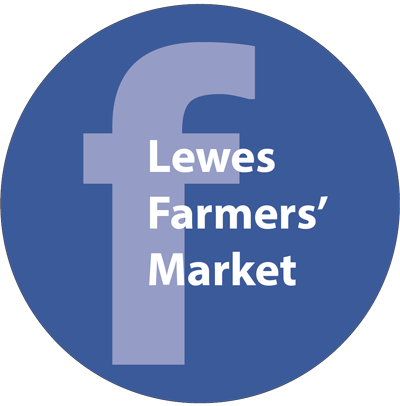Allotment coordinator Sarah Rideout facilitated a planning meeting last week on a frosty Wednesday morning. We were there to discuss what we wanted to grow at our allotment this year and what extra activities we'd like to do. The St Nicholas Day Centre were kind enough to host the meeting in The Sanctuary, which is well named, and was delightfully cosy, although we were careful not to slip on the ice on our way over to it.

There were seventeen of us in total, including all of the St Nicholas clients who attend, some community allotment members, Flourish sessional worker Felicity Ann and St Nicholas support worker Eleanor.
Sarah mentioned the exercises they'd been doing at the last allotment session to help show how to get the blood moving if people feel cold. Some of the exercises included shaking, rubbing and patting hands. Felicity Ann said she'd done star jumps at the bus stop afterwards!
Sarah talked about how important it is to wear the right clothes at the allotment, particularly at this time of year when it's so muddy and cold. Waterproof coat, old warm things and sensible footwear all help keep people warm and dry.
Then we got down to the business of planning what we wanted to do and grow at the allotment. Sarah had brought lots of books, Felicity Ann had printed off funny pictures of fruit and veg that could be cut out and stuck to planning pages. We had glue, pens and scissors, and people took turns to cut, stick and write.
The most popular choices were strawberries, peas and different kinds of potatoes. Also lettuces, tomatoes, sprouts, parsnips, spinach, beans, leeks, apples, squash, pumpkin and a 'pizza' bed!
There were some interesting and unusual suggestions too, such as water chestnuts, plantain and aubergines. Emma suggested that perhaps, if the conditions at the allotment weren't suitable for all those to grow, we could bring them up in a dish, so people could taste them.
Also on the wall were possible extra activities we might be able to put on at the allotment. Options included:
- outdoor cooking
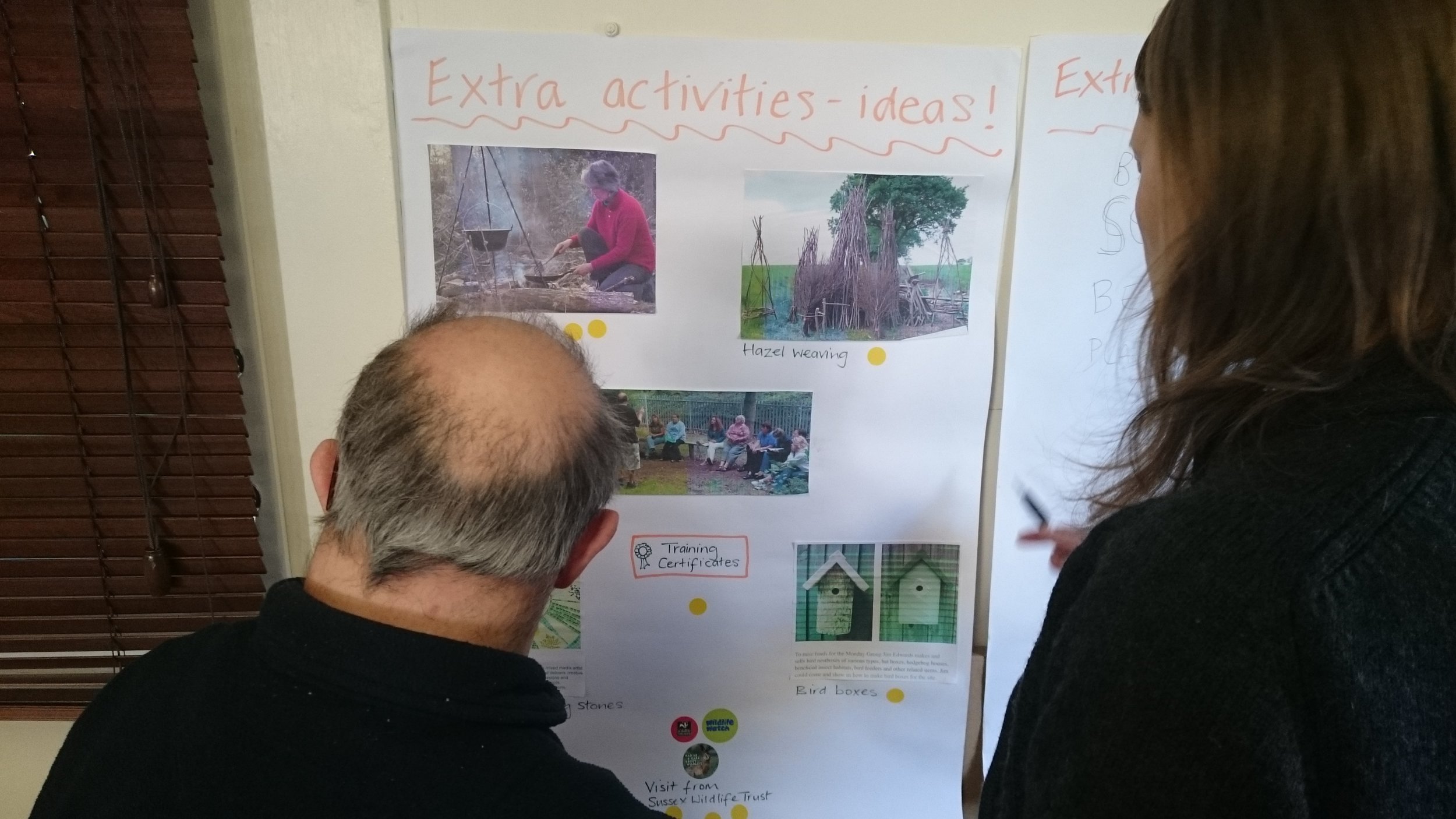
- a visit from Michael Blencowe from Sussex Wildlife
- hazel weaving
- poetry and storytelling
- making bird boxes
- mosaic stepping stones
People were encouraged to put a sticker on ones they were keen on, and to add more ideas if they thought of any.
Then we stopped for some welcome tea and biscuits.
Finally, whilst some people drew pictures of wildlife you might find at the allotment (such as Hollie's fox), others did pictures showing the sorts of colours of plants they'd like to see in the beds.Some did an activity matching plant drawings against drawings of the sun, soil and water. The point of this was to encourage thinking about what are the best growing conditions.
Also, Felicity Ann worked with members of the group, one at a time, demonstrating how to safely open and close tools - specifically secateurs and folding pruning saws. Some of us found it particularly tricky to keep our fingers away from the saw blade when closing it.
All in all, it was a lovely and very useful morning. Many thanks to everybody for their contributions.
Emma Chaplin

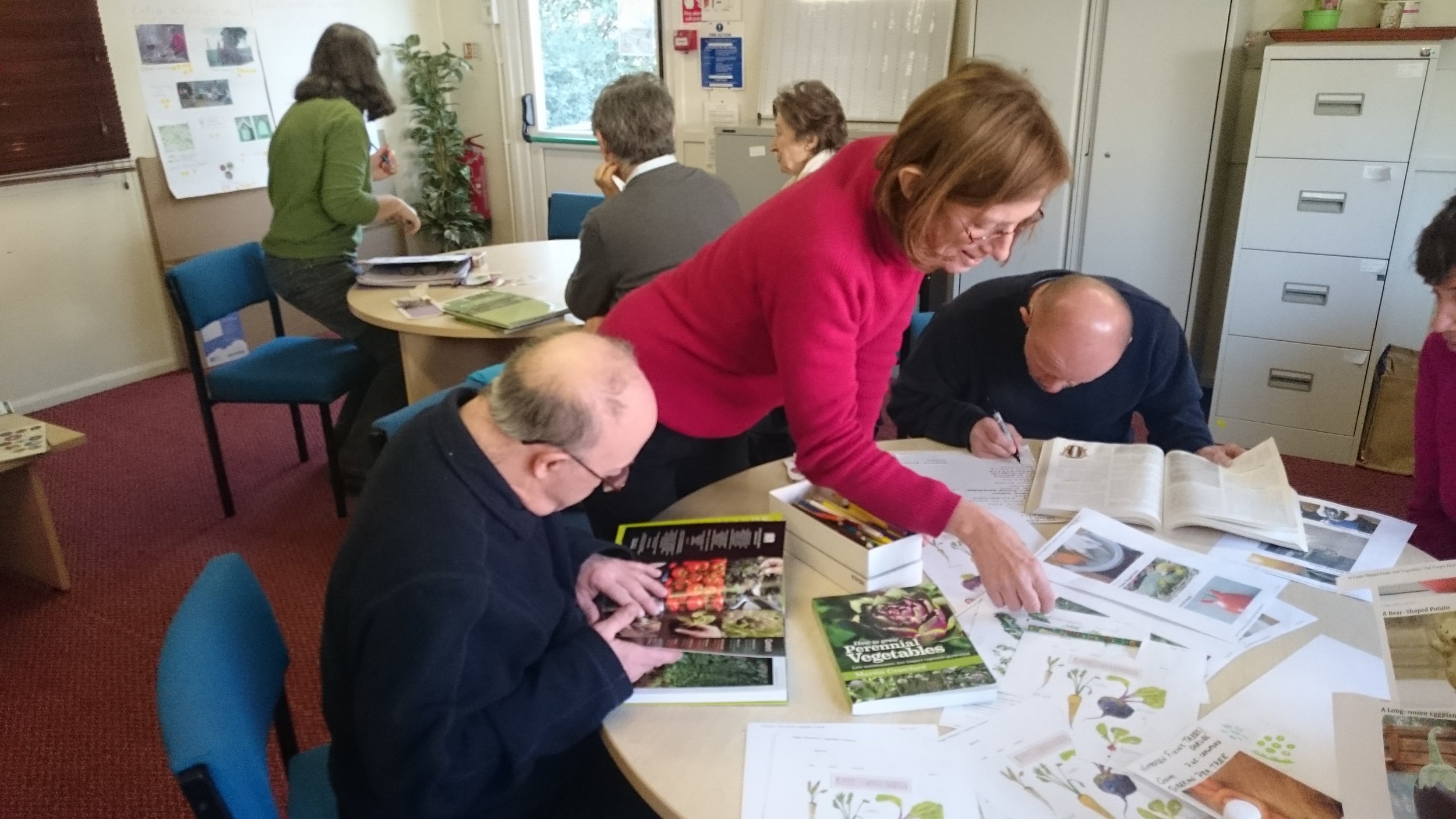

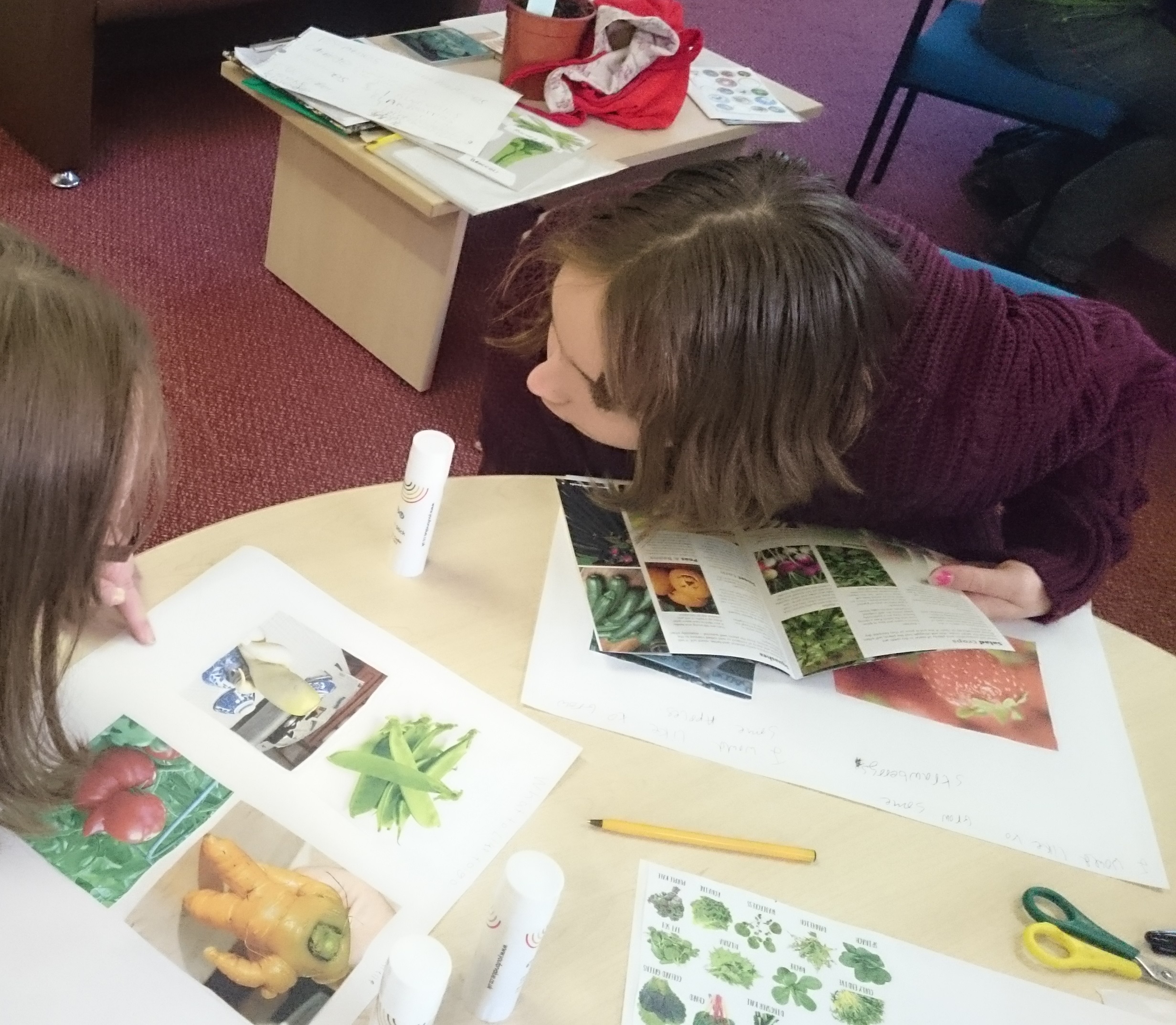
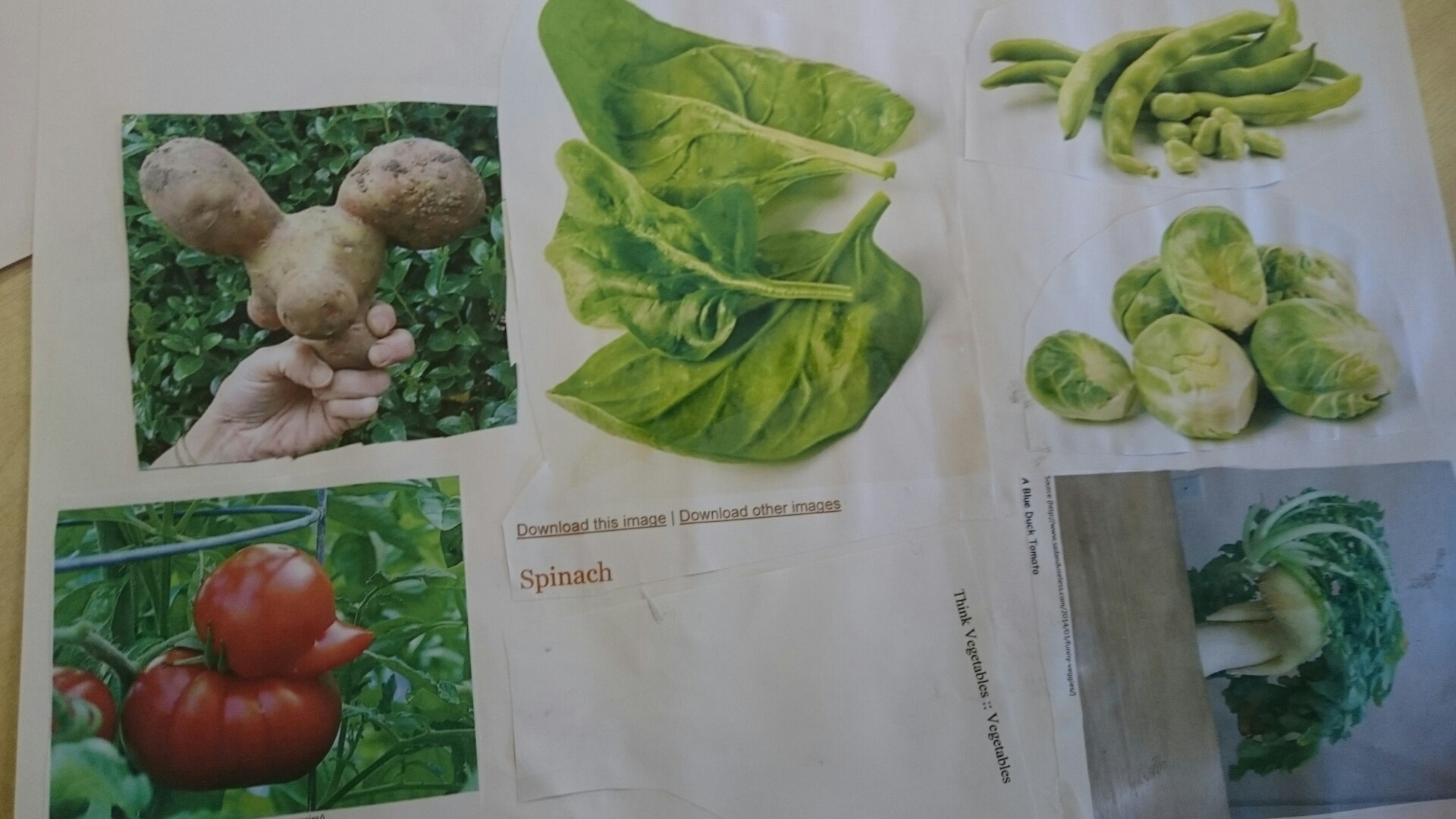
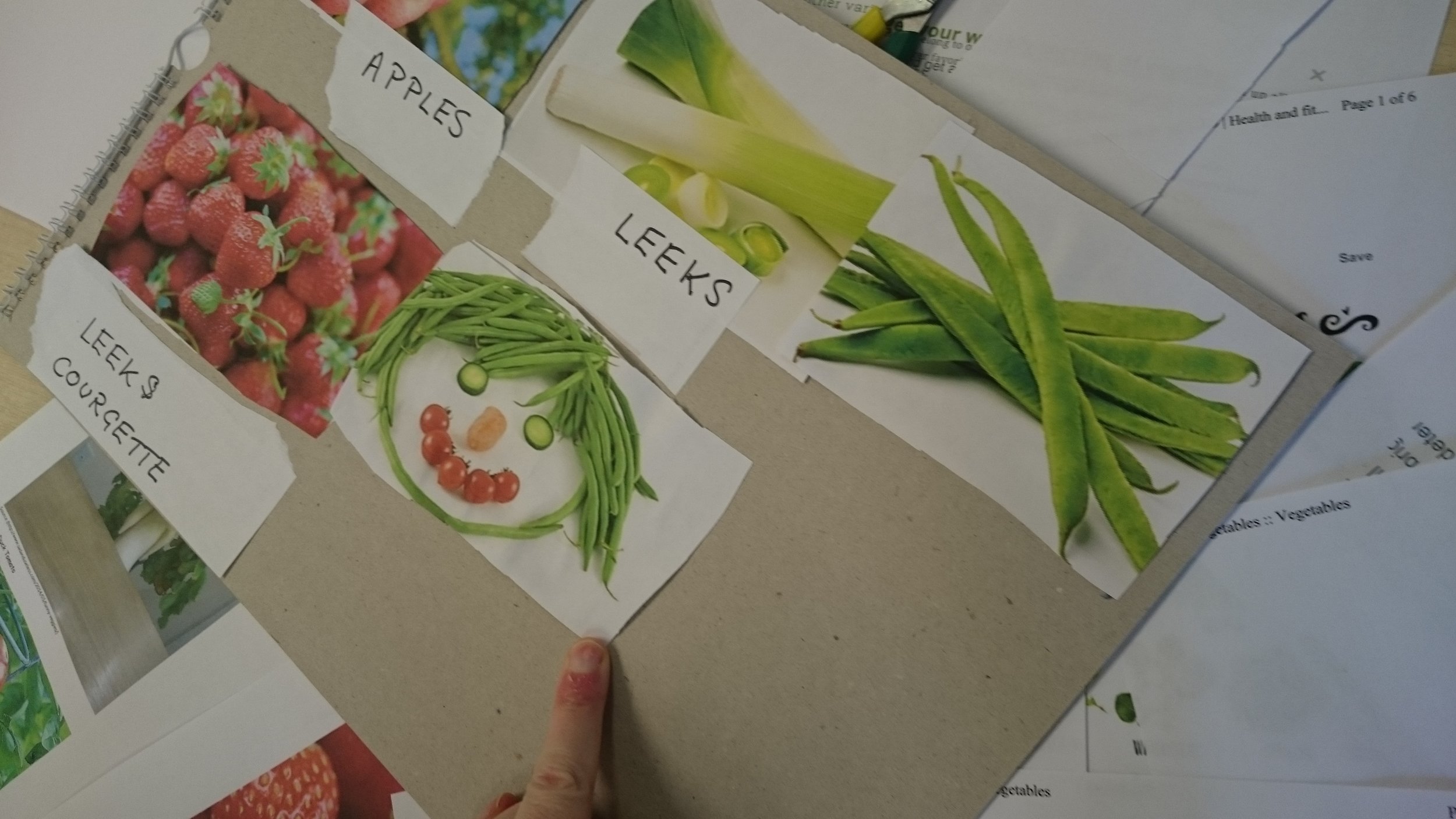
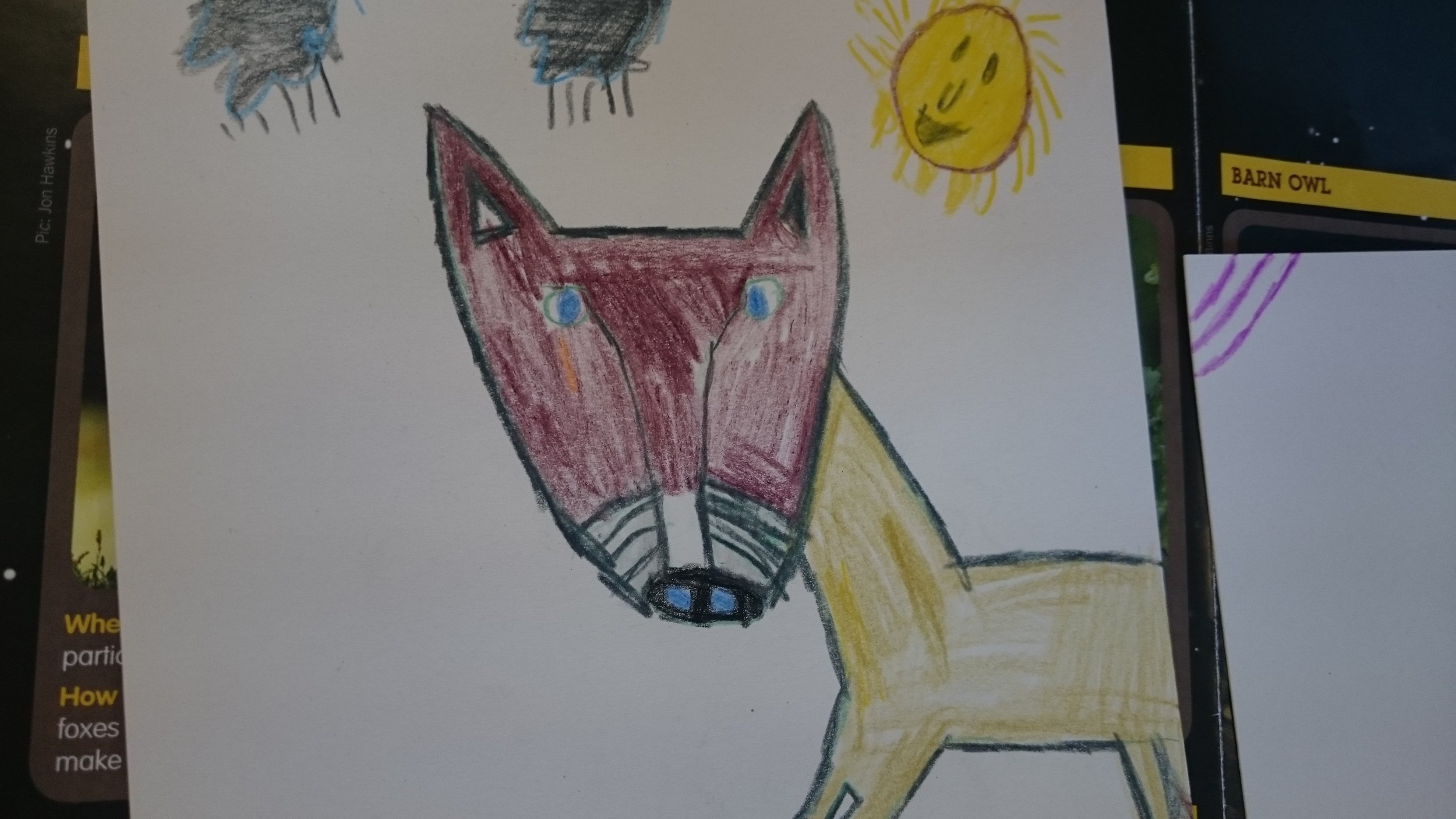
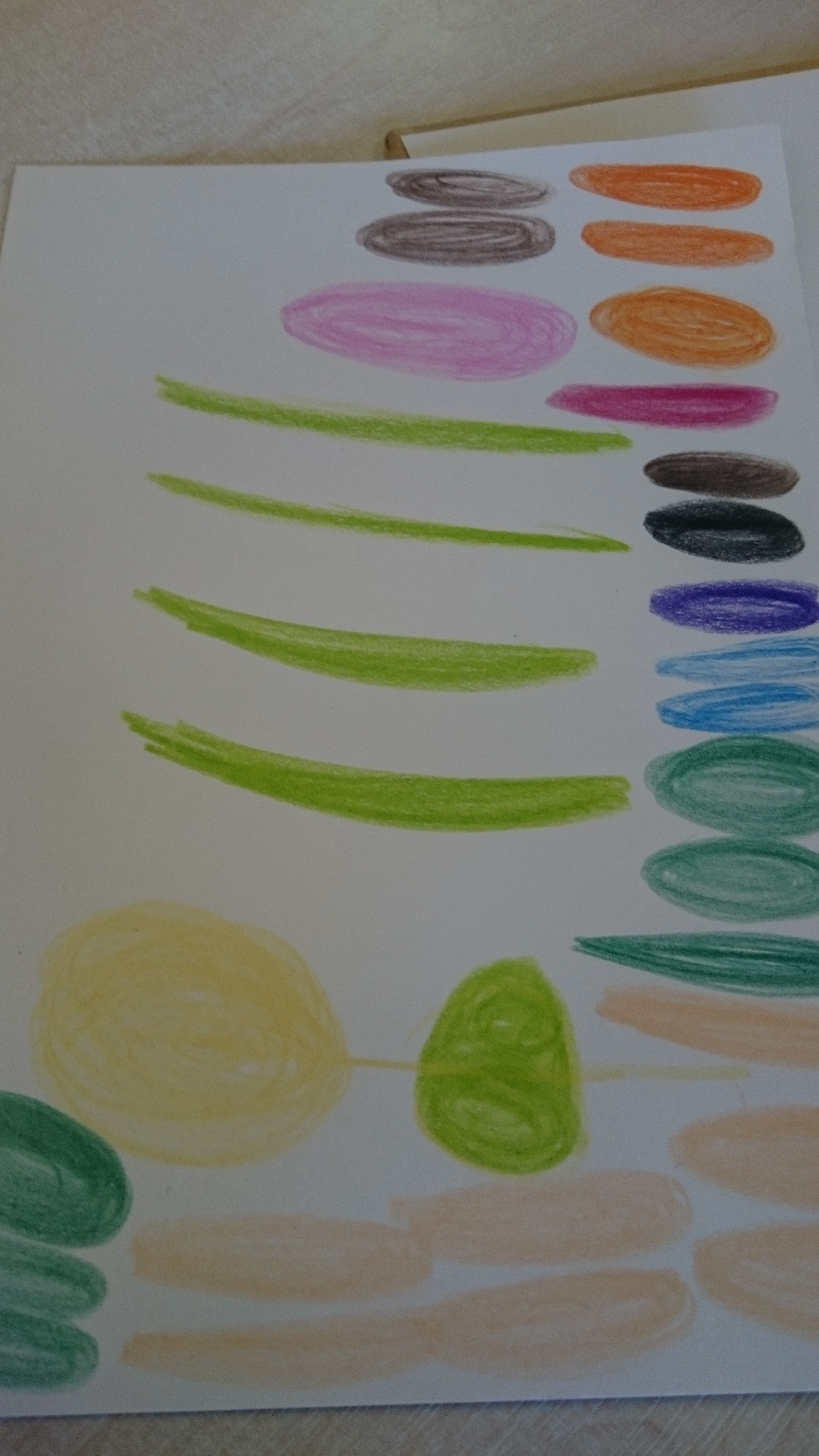


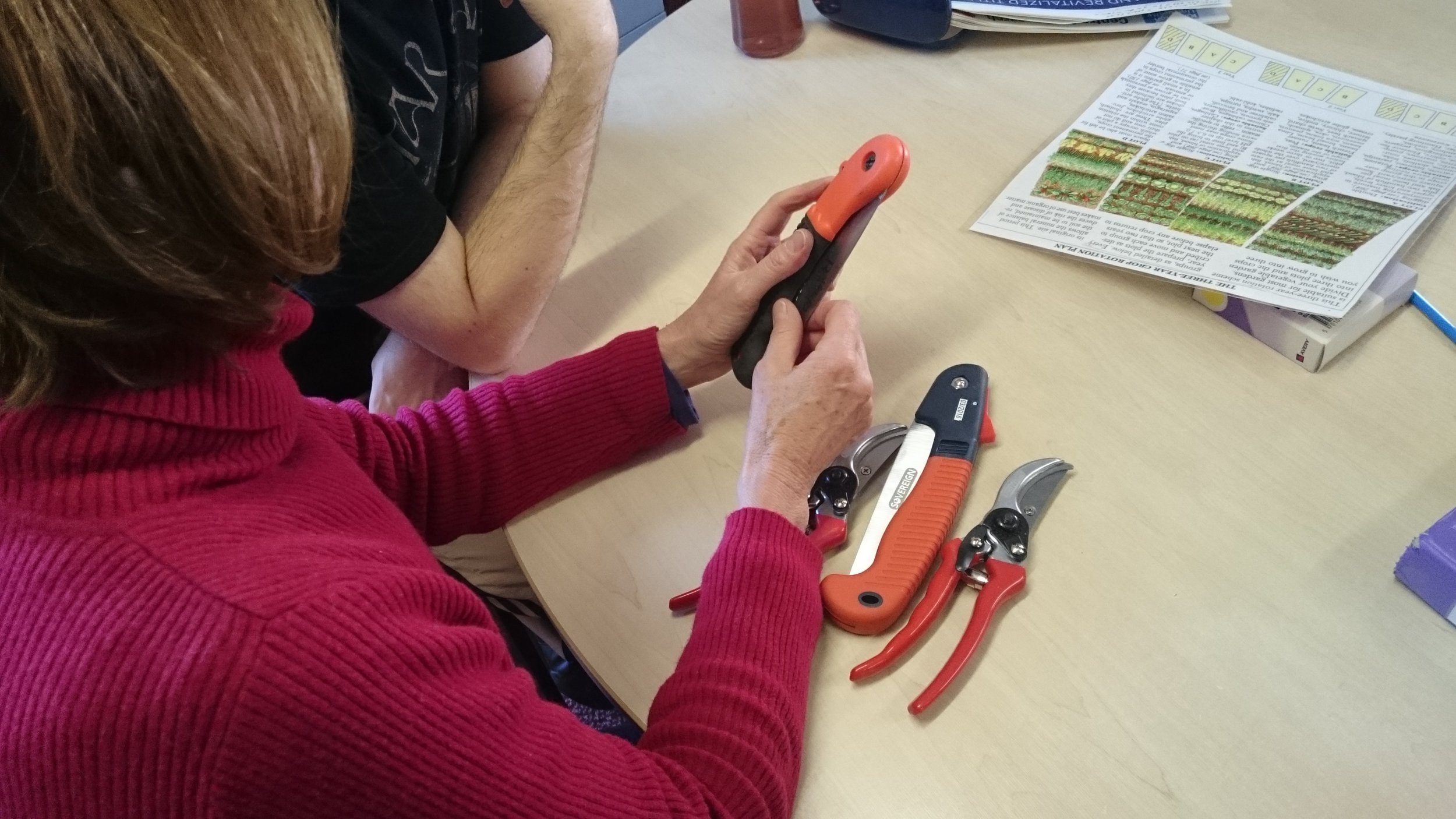
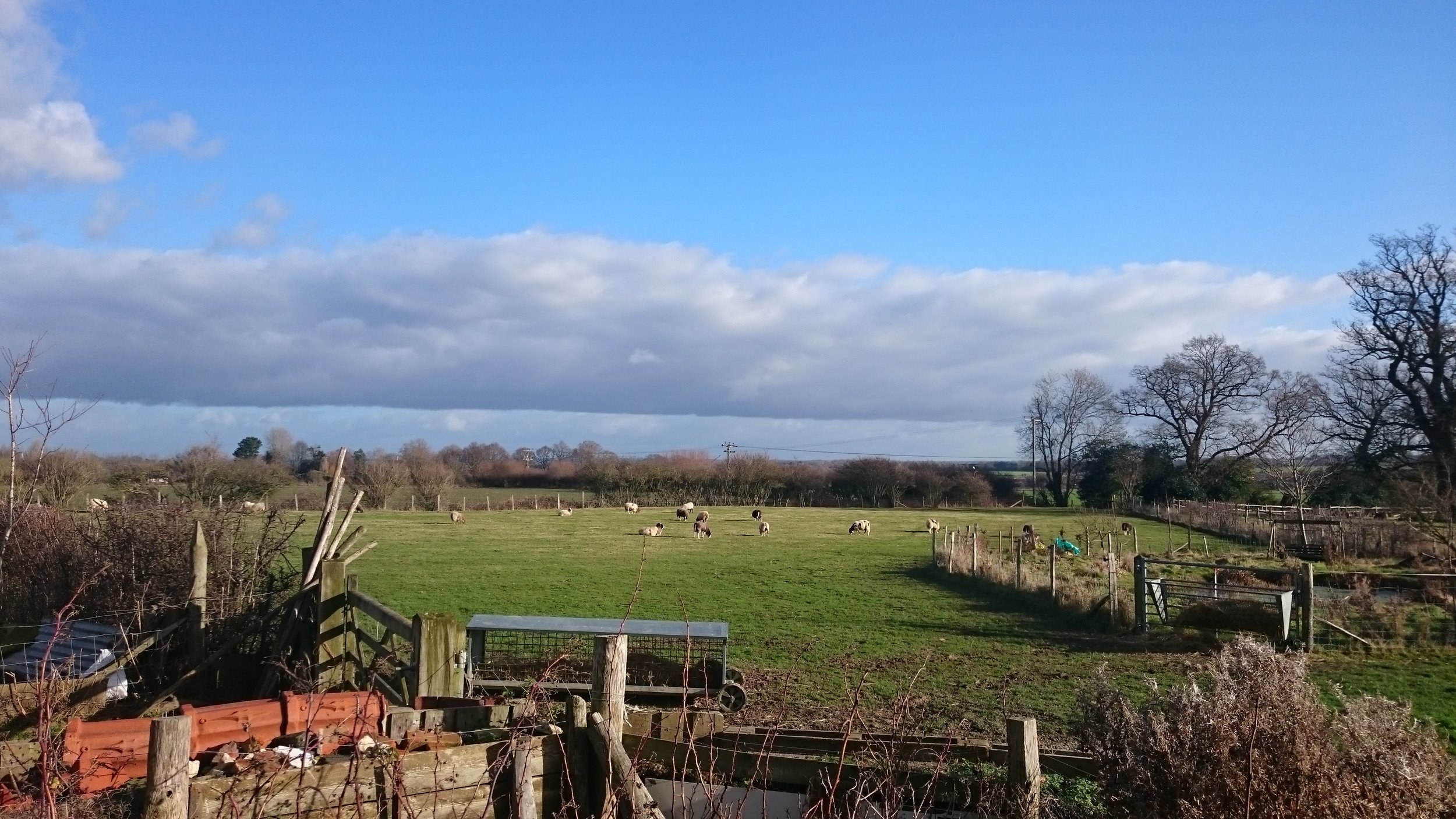 First of all, Owena needed to strim back some brambles to make it easier for us to cut the two types of willow growing in the bed, so most of the group left her to it and carried on walking beyond the willow bed in order to go and see the horses and pigs.
First of all, Owena needed to strim back some brambles to make it easier for us to cut the two types of willow growing in the bed, so most of the group left her to it and carried on walking beyond the willow bed in order to go and see the horses and pigs.

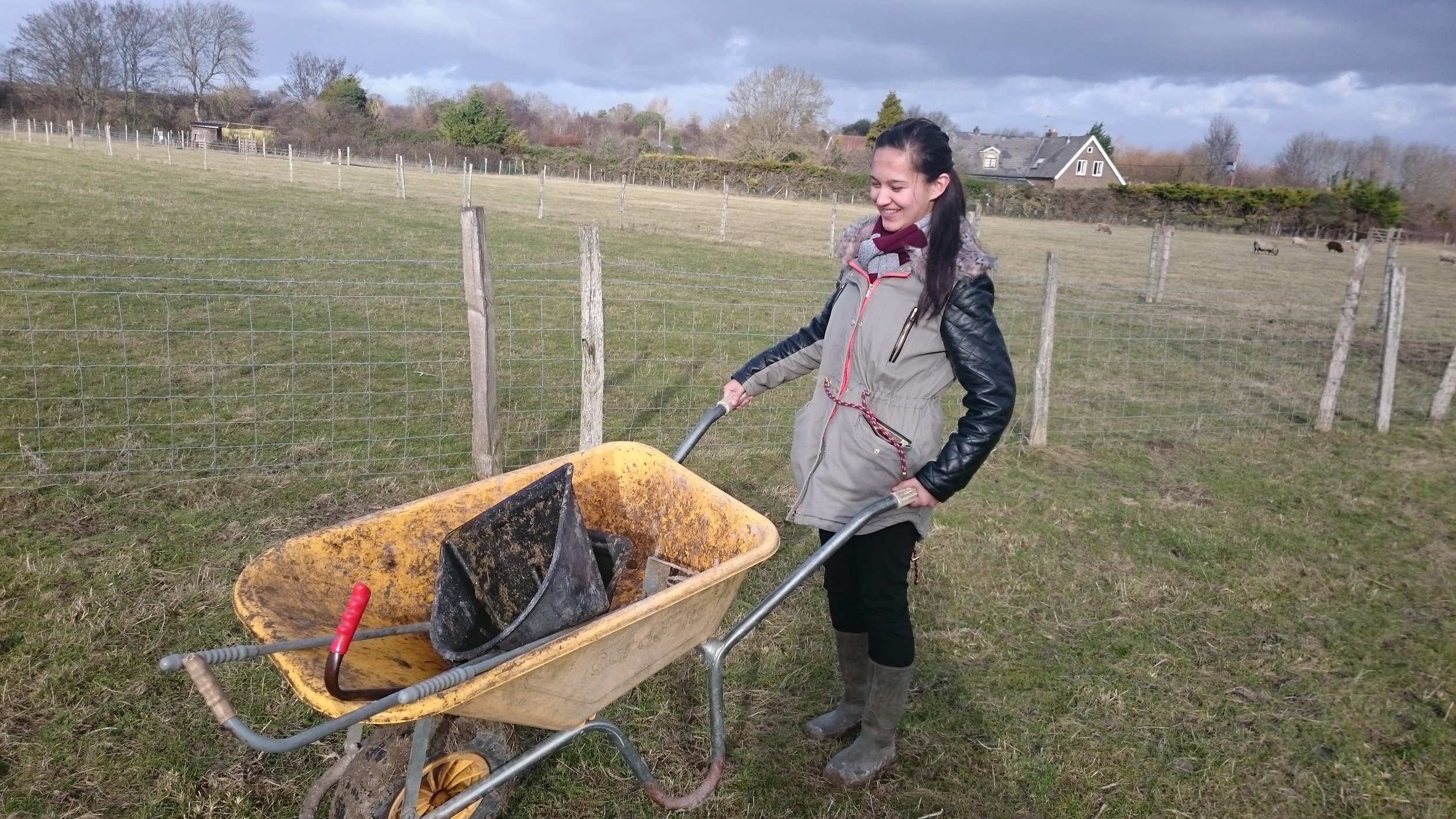

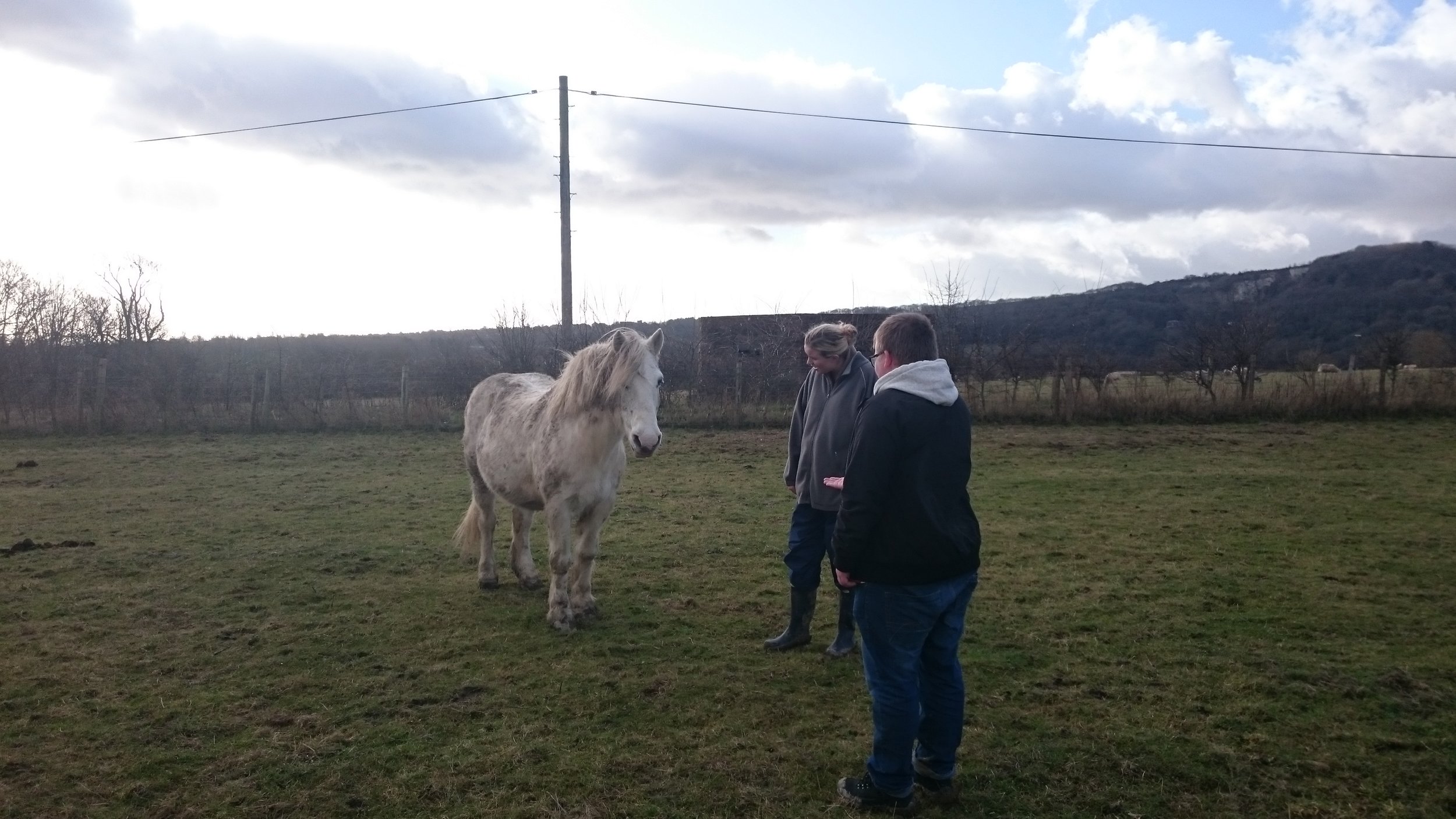
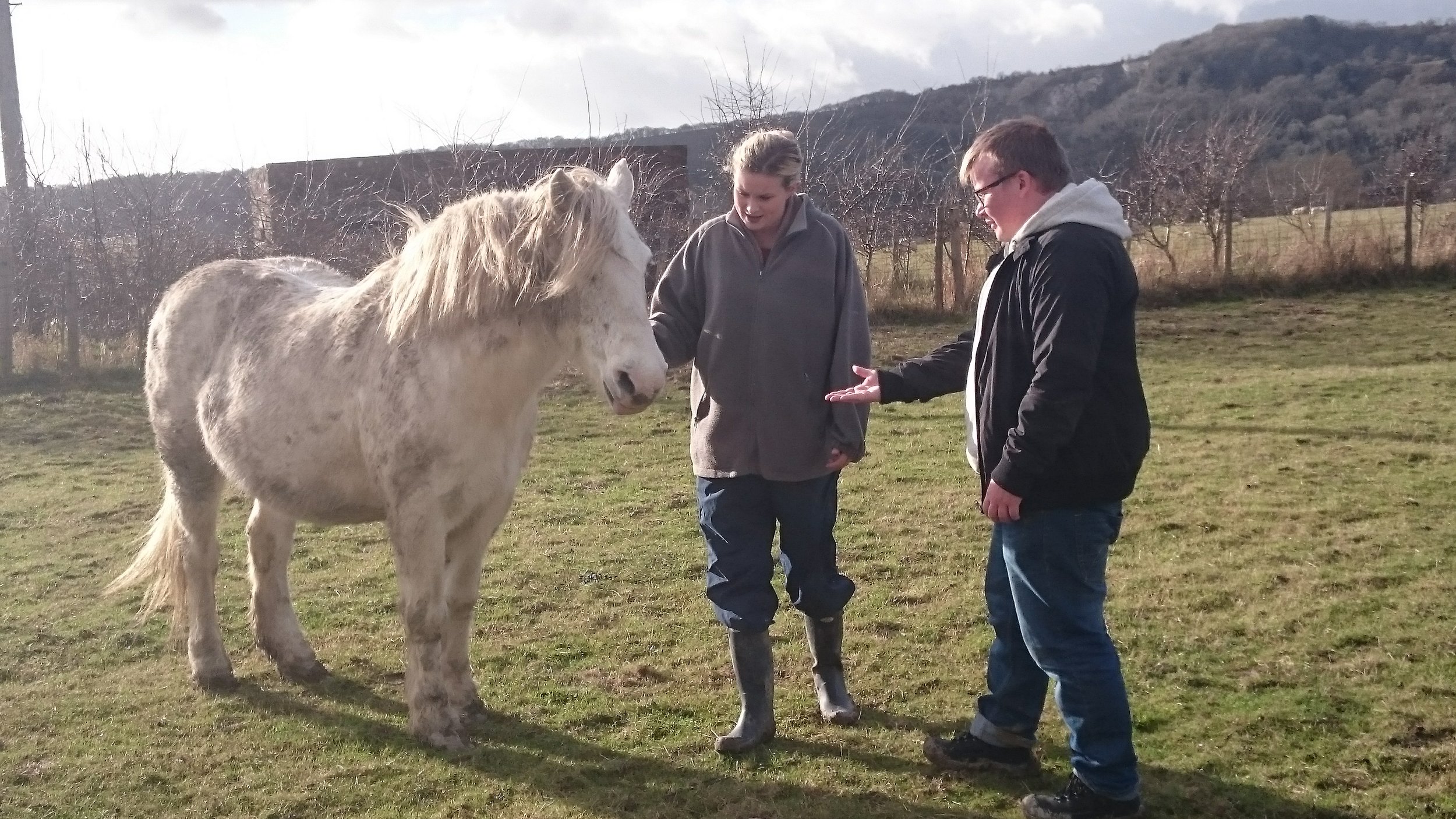

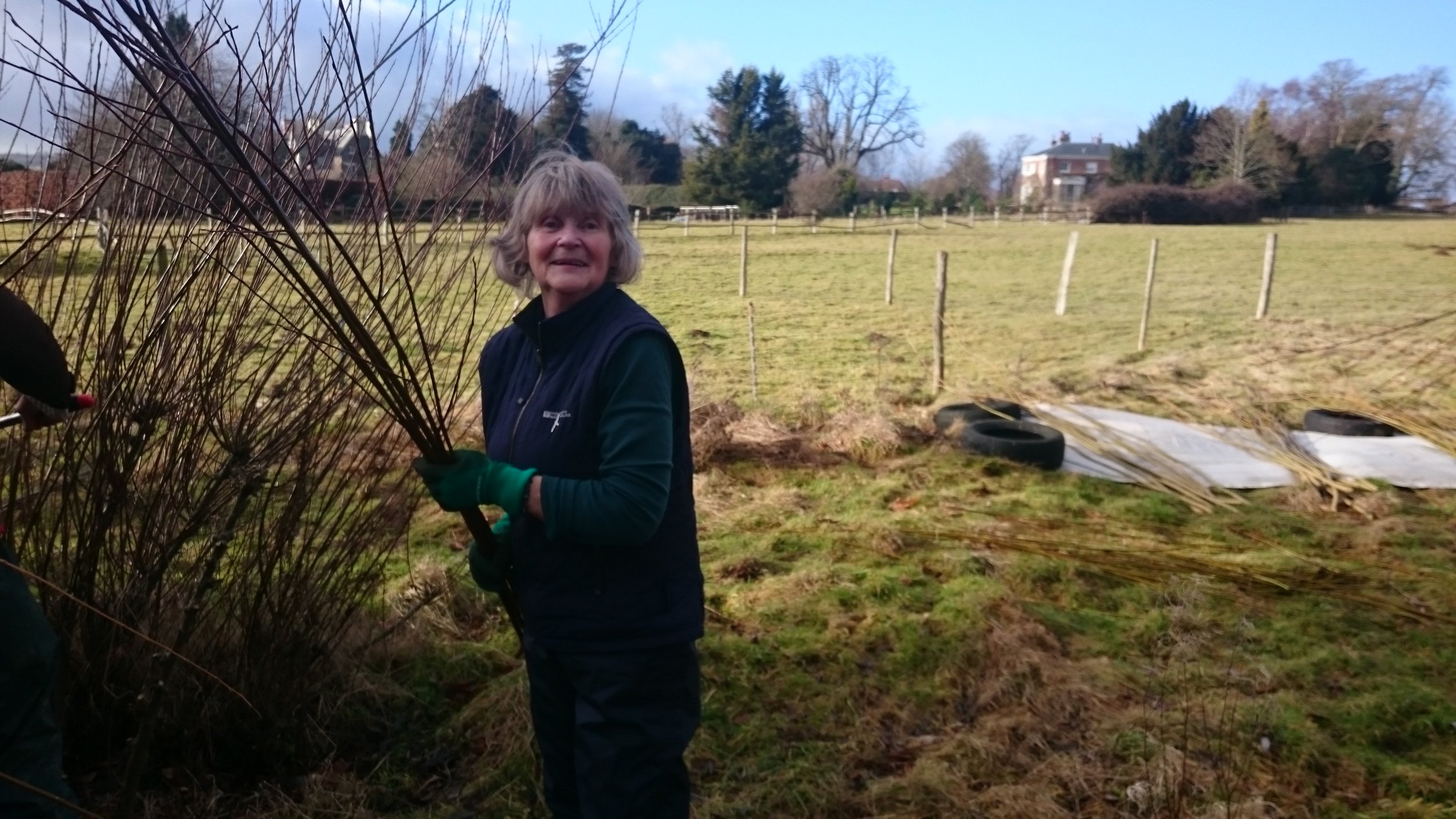
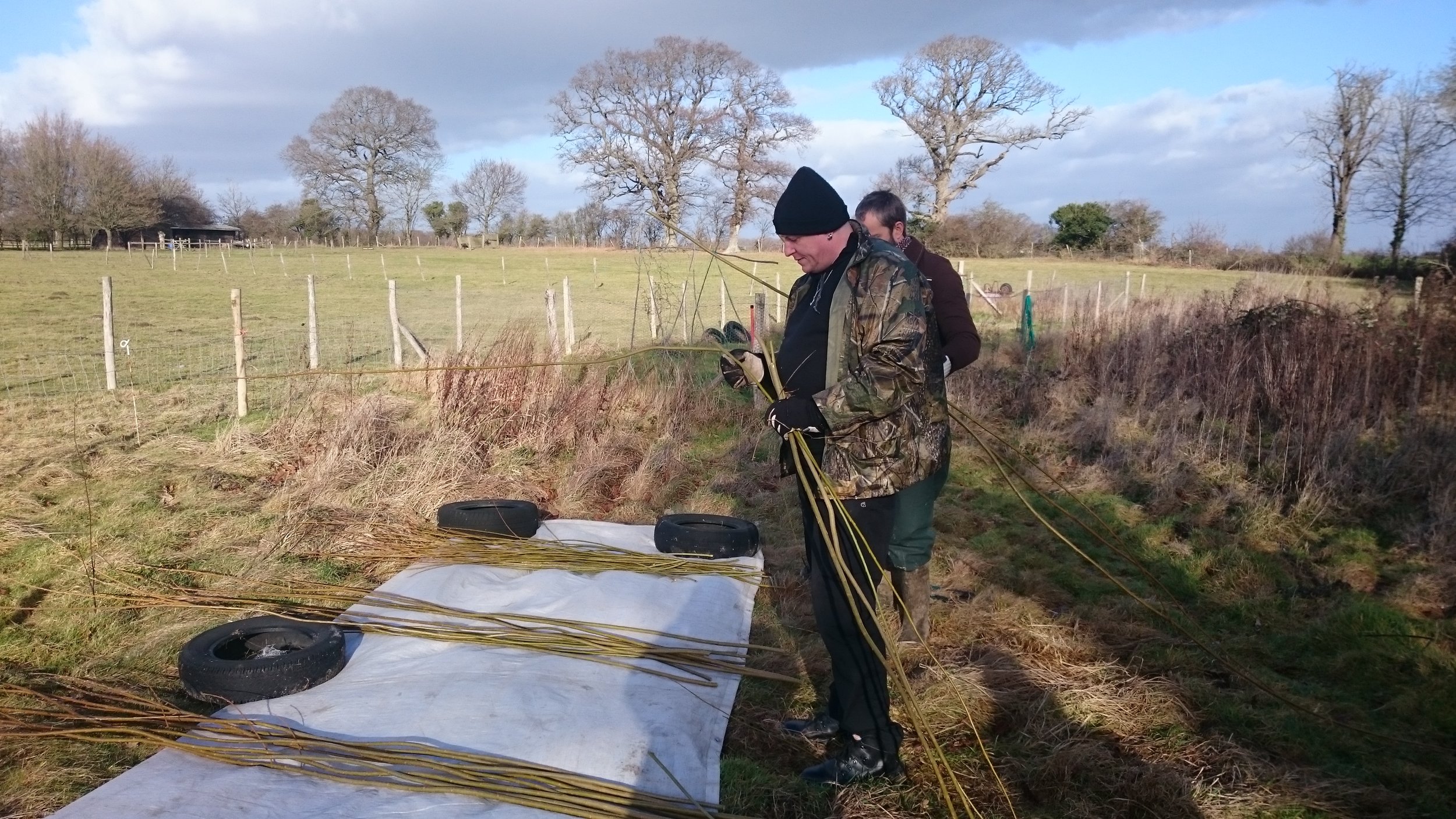
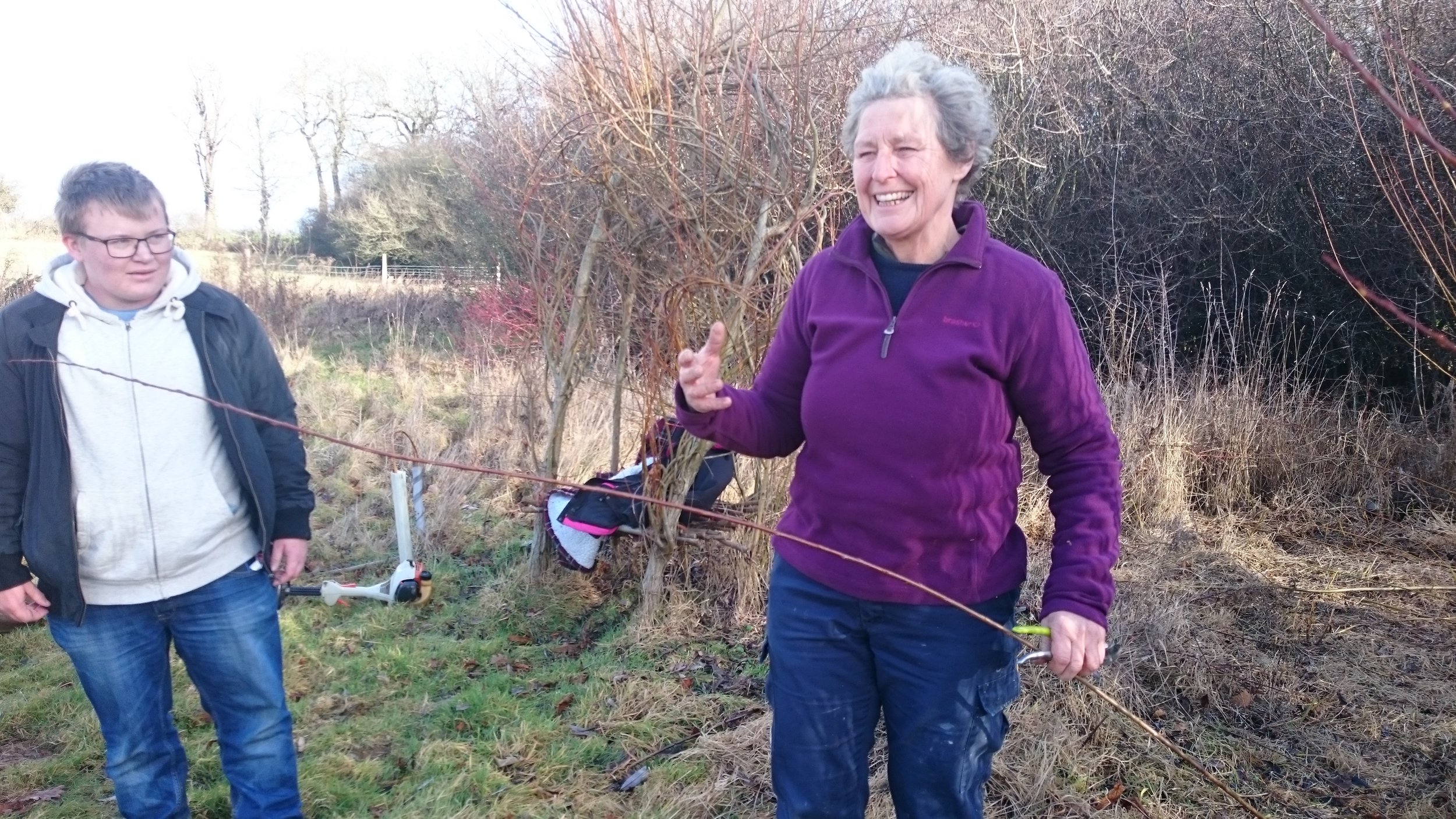
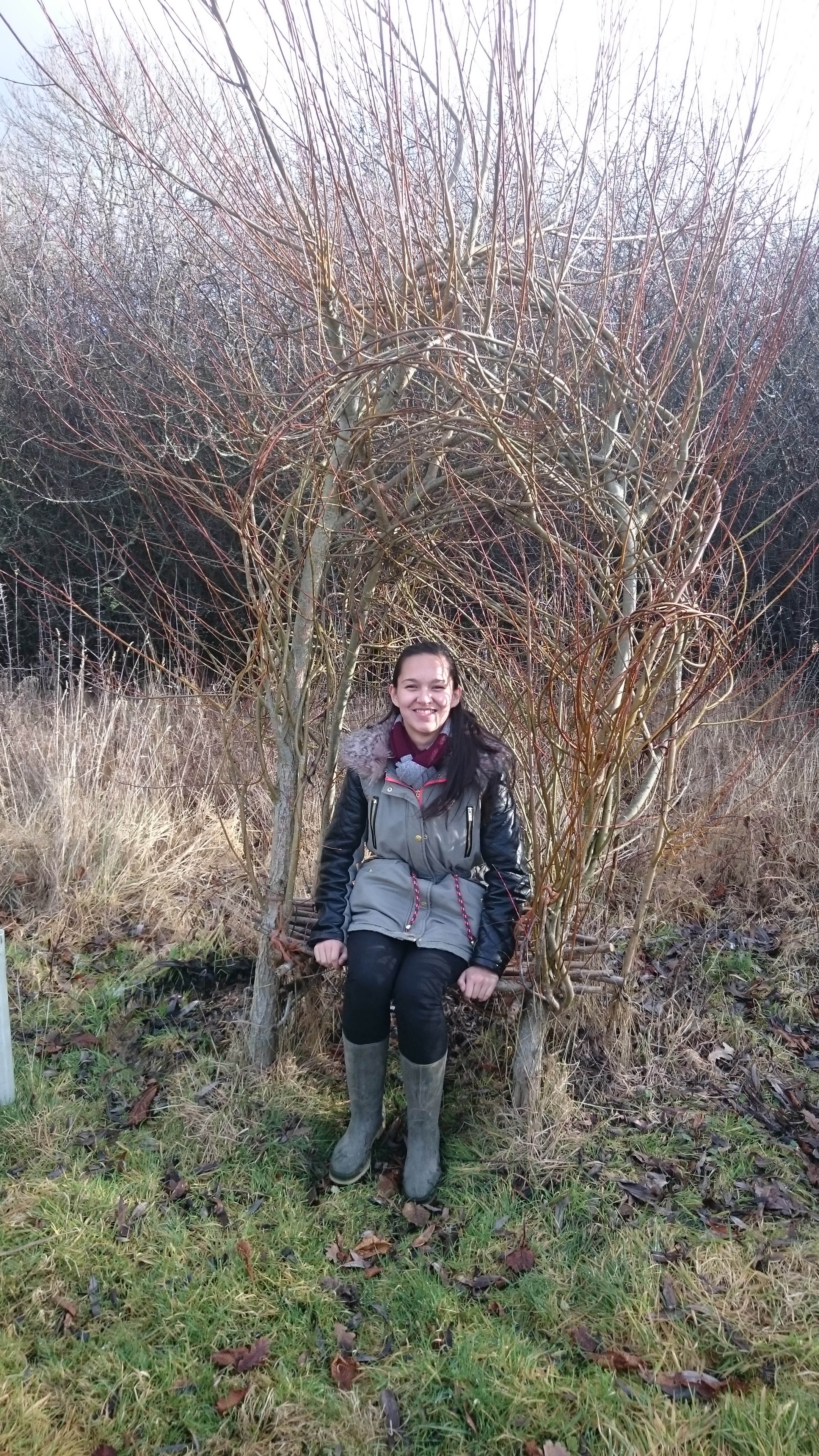
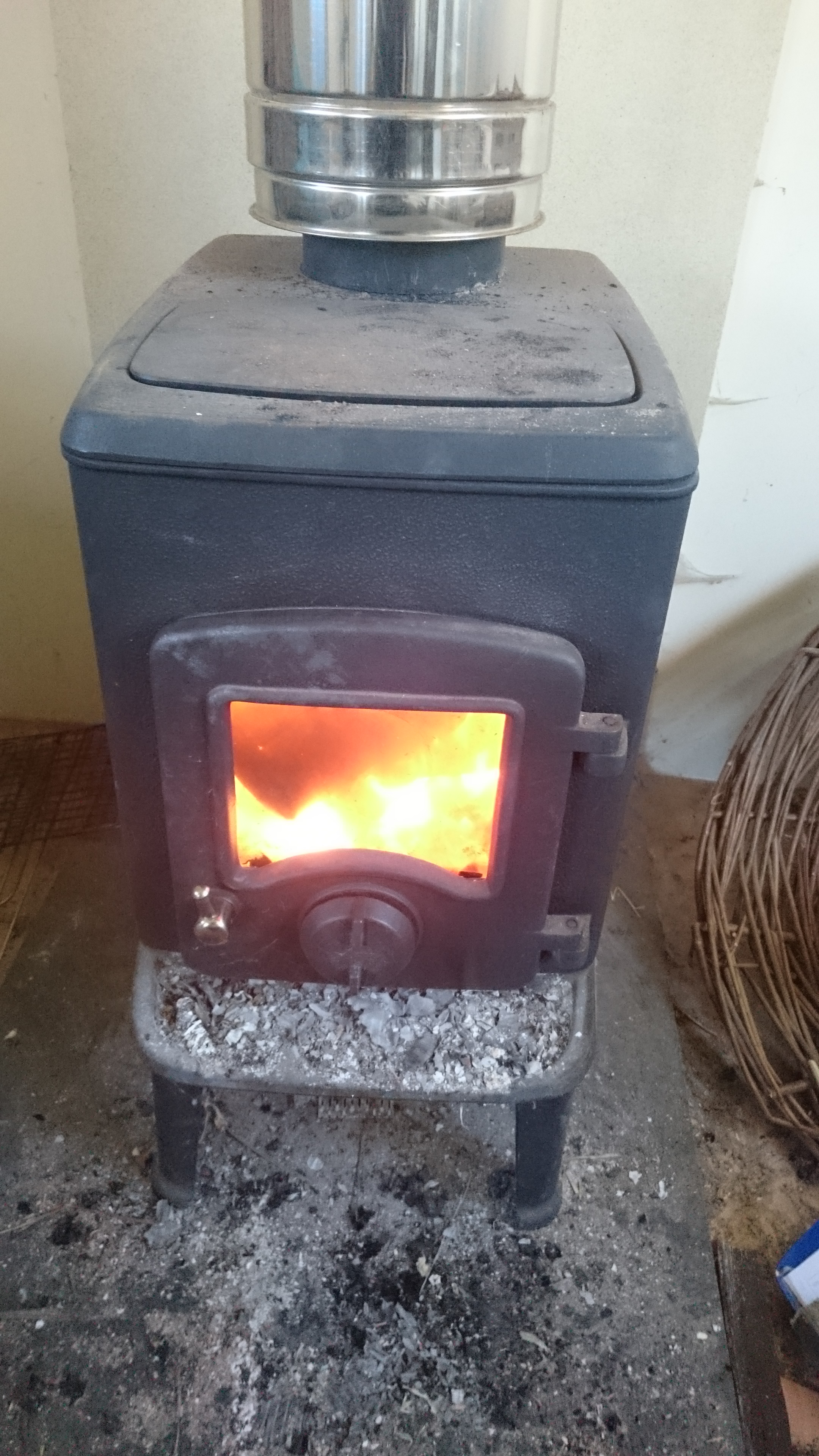 After some hard work, the group headed back to the cabin for lunch around the wood burner to warm up.
After some hard work, the group headed back to the cabin for lunch around the wood burner to warm up.